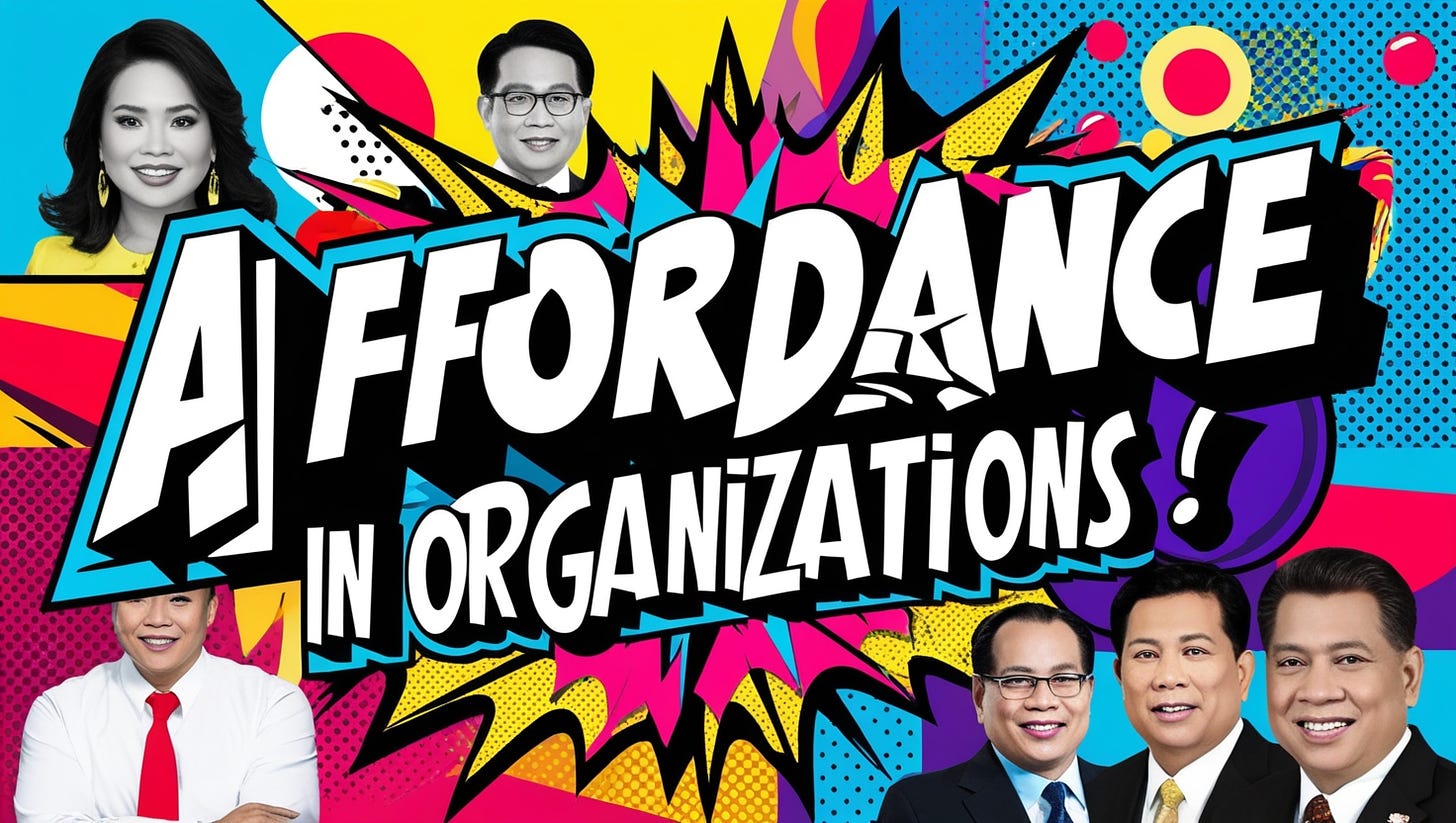An all-too-common scenario
A newly designed collaborative workspace in a startup, vibrant and inspiring, remained largely underutilized. Employees simply didn’t know how to engage with it. A survey revealed the issue—unclear signage and guidelines left staff unsure of how to use the space. The result? Missed opportunities for innovation at a critical growth stage. Only after management held workshops showcasing its potential did the space come alive, buzzing with creativity. This story highlights a core challenge in organizational change: recognizing and communicating affordances effectively.
Affordance Theory: A Game Changer
Affordance theory, developed by psychologist James J. Gibson, offers valuable insights for OD practitioners. It explains how objects, systems, or tools signal possibilities for action, based on their interaction with humans. Whether it’s technology adoption or workplace design, understanding affordances can unlock new opportunities for organizational performance, growth and efficiency.
Why Do We Act—or Fail to Act?
Despite having access to proven action and learning frameworks, many organizations struggle to act swiftly and decisively. Whether it's slower tech adoption or inadequate responses to global challenges like climate change, affordance theory sheds light on why some organizations act and others don’t. It helps us understand the signals that drive—or stall—action.
In essence, affordance relates with the opportunities for action provided (or offered) to the action performer by the environment. But then, there are also invitations for action from the world around us that can or cannot be accepted based on the action performer's goal, intention or even perception and understanding. Without congruence, actions may be unexpected, delayed or may not even happen.
Why Affordance Theory Matters in OD
1. Decoding Interaction Dynamics: OD practitioners can leverage affordance theory to understand how organizational tools and artefacts (and structures) interact with people, guiding effective implementation of change.
2. Goal-Oriented Actions: Identifying goal-oriented potential actions within systems helps align organizational goals with available resources and technologies.
3. Contextual Sensitivity: Organizational culture and existing processes shape how affordances are perceived. This understanding allows OD professionals to tailor interventions more effectively.
Practical Applications in OD
- Technology Adoption: Recognize and utilize new tech functionalities to drive better outcomes, from project management tools to AI-powered platforms.
- Visual Management Tools: Tools like Kanban boards afford clear, actionable visual cues, enhancing team coordination.
- Digital Health Solutions: mHealth apps afford action tracking, driving engagement and adherence to health protocols.
- Change Management: Highlighting affordances of new processes helps employees embrace organizational change.
- Collaboration Tools: Platforms like Slack or Teams afford seamless teamwork, boosting productivity.
Driving Organizational Success
By understanding and acting on affordances, OD practitioners can enhance efficiency, align goals, and support innovation. This theory offers a practical roadmap for unlocking an organization’s potential, driving long-term success in a rapidly changing environment.Let affordance theory be your next powerful tool in navigating organizational change.
Navazhylava Kseniya of EMLV, France explains the affordance theory in organizations. Although this approach will never provide the creator with all potential user actions, it helps change one’s viewpoint to a more reflective one, and devise organizational designs and technologies that are safer and easier to use.
NOTES
ODPN Conversations
Leveraging Analytics in OD and Change Management on Friday, October 25, 10am-12 nonn, via zoom with Mr Schubert Caesar "Bong" Austero.
Process Observation and Analysis with Dr Josephine Perez, PhD, RPsy on November 28 in the Meralco Power Tech. Join us!!!Ed Canela’s Seminars
National Hackathon Judge for AI for Business Innovation: Empowering the Next Generation of Entrepreneurs, Red Bull Basement program, 26 October, University of Asia and the Pacific (UA&P) 3 to 7PM.
AI4Business. First Cohort, November 13, 20 and 27, 2024 (3 Wednesdays at 9:00 to 5:00 pm, in-Person) at the University of the Philippines Institute for Small Scale Industries (UPISSI) REGISTERNOW. REACH US AT: University of the Philippines Institute for Small-Scale Industries Room 401, Fourth Floor, E. Virata Hall, E. Jacinto Street, UP Campus, Diliman Quezon City, Philippines 1101 Trunk Line: 8981-8500 loc. 4054 or vist UPISSI.




